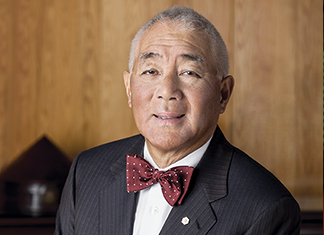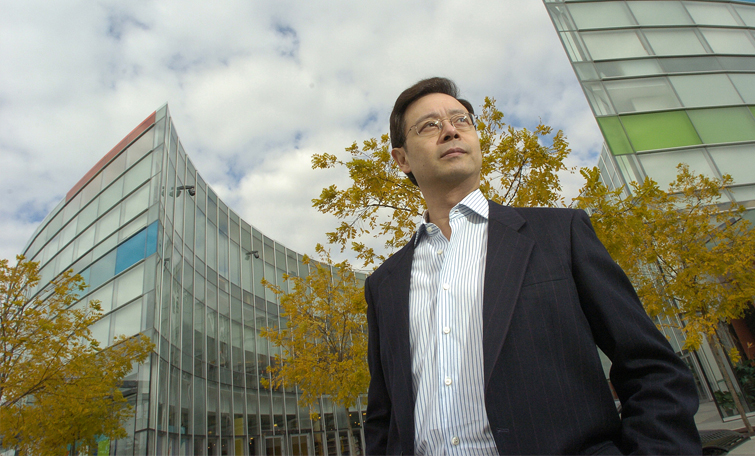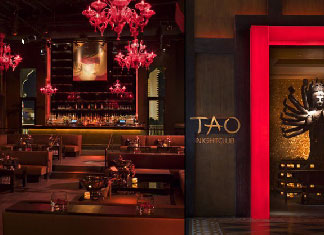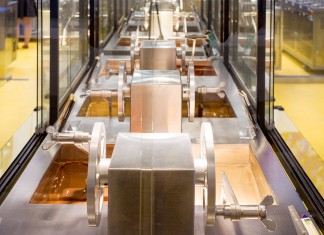Food and Beverage Companies Demonstrate a Growing Appetite for M&A Activity
- Caifu Magazine | by Caifu Global
- EN

By Blake Friesen
The food and beverage industry outperformed the S&P 500 in the third quarter of 2015, according to a report by SDR Ventures, an M&A advisory firm in Colorado. The firm notes that consumer demand for natural and organic food, as well as gluten-free, high-protein or non-GMO (genetically modified organism) products have contributed to the sector’s growth. This is occurring in both mature and emerging markets, and as a result there has been an increase in discretionary spending on food and beverages.
The SDR report notes that over the past 12 months, the retail segment of food and beverage outperformed the S&P 500 by 1.9 percent. Divided by subsectors, we have the beverage segment, which outperformed the S&P 500 by 8.9 percent, and the food products segment, which outperformed the S&P 500 by 1.4 percent. The energy sector has dragged down the S&P 500 this year, enabling other sectors to do better.
Consumers in emerging markets have shown a willingness to spend more on a higher quality product when it comes to food and beverages. In Asia, for example, SDR says that Chinese consumer preferences have increasingly shifted toward Western brands over the past few years, driven by food safety and quality control issues in China. This shift has also been a driving force behind M&A deals, enabling Western food companies to sign joint venture partnerships with Chinese companies, both of which tend to benefit by improving their brand recognition of both companies in Asia. A prime example of this type of M&A behaviour is WhiteWave Foods Co., which in early 2014 entered China in a noteworthy fashion by signing a joint venture with the country’s biggest dairy company, China Mengniu Dairy Co. Ltd. The joint venture provided WhiteWave with sales expertise, large-scale manufacturing capabilities, in-depth knowledge of local consumers and a wide distribution network throughout China. WhiteWave has continued to munch on smaller competitors in its effort to supply the world with mass-market healthy food, and in the second quarter of this year it gobbled up Wallaby Yogurt Company, a specialty organic yogurt maker in California, for US$125-million. It followed up that acquisition with a bigger deal, buying nutrition food company Vega for about US$550-million. WhiteWave reported the Vega deal in June, days after Campbell Soup Co. reported its plan to spend US$231-million on Garden Fresh Gourmet, which has the top-selling refrigerated salsa brand. From those deals alone it is clear the M&A market in food and beverage is active.
In fact, this has been one of the busiest years for M&A in the food and beverage industry, as companies are showing their preference to acquire competitors as they struggle to increase their selection and sales. In the first half of 2015, the food sector accounted for US$80.2-billion in deals, up almost 130 percent compared with the same period in 2014.
Leading the way Hormel Foods Corp., best known as the maker of Spam, in May, 2015, signed a deal to acquire Applegate Farms LLC, a natural sausage-maker, for US$775-million.
The trend of increasing activity in food and beverage M&As is continuing in the second half of 2015. In early July, the US$62.6-billion merger between two food and beverage goliaths, Heinz and Kraft Foods, closed, creating Kraft Heinz Co., the third-largest food company in the U.S. and the fifth-largest in the world. It has 13 brands valued at US$500-million or more each and is backed by heavyweight investors 3G Capital and Berkshire Hathaway.
Then in early August, there was a thirst-quenching announcement of a three-way merger involving European bottlers of Coca Cola beverages, which will consolidate the bottling industry; the companies involved in the merger are hoping the merger will bring greater economies of scale that allow for cost-cutting measures. They are Coca-Cola Enterprises, Coca-Cola Iberian Partners and the German bottling business of Coca-Cola. Combined, the merged company will be the world’s largest independent bottler of Coca-Cola drinks by net revenue, with an expected market value of US$31-billion, including debt.
The merged bottling company will have operations in 13 countries, notably Great Britain, France and Spain. It also allows Coca-Cola Enterprises to move its corporate headquarters to London and slice exposure to higher taxes in the United States.
Like all blue chip companies, the structure of Coca Cola and its various joint ventures, partnerships and subsidiaries is complex. In 2010, Coca-Cola Enterprises sold its U.S. operations to Coca Cola Co. (from herein referred to as Coke). Coca-Cola Enterprises itself was spun off from Coke in 1986 as a way to improve Coke’s profit margins and balance sheet. At that time, the bottling business, although a necessity for a large soft drink maker, required lots of capital but offered low margins.
Keeping in line with the beverage business, but sliding over to something with a little more buzz, in September, 2015, the world’s two best-selling brewers, Anheuser-Busch InBev NV and SABMiller PLC, entertained the idea of a US$106-billion merger. For Anheuser-Busch, which approached SABMiller with the idea of a takeover, there will be many obstacles in its path to closing the deal, such as securing regulatory approval from various governments and finding enough synergies between the two companies to save on costs. Securing regulatory approval will undoubtedly involve antitrust concessions such as breaking up SABMiller’s joint ventures with Molson Coors Brewing Co., but that would be an expected consequence of such a large deal.
One significant problem could be cutting costs; Anheuser-Busch is overseen by rigid private equity investors who are already accustomed to running a tight ship, and SABMiller has received compliments by a variety of analysts, notably Kenny Lam at Barclays Bank, for already managing an efficient overhead. If this deal closes, however, the merged company will have annual revenue of approximately US$64-billion, and earnings before interest, taxes, depreciation and amortization of US$24-billion. For the sake of comparison, it will match revenue of PepsiCo and surpass that of Coca-Cola. Anheuser-Busch has plenty of incentive to ensure this deal goes through: It is on the hook for a US$3-billion fee to SABMiller should the deal fizzle.
Anheuser-Busch, with its headquarters in Belgium, already controls 25 percent of the beer market. It controls 16 brands that individually generate over US$1-billion annually, including Budweiser, Stella Artois, Corona, Hoegaarden and Leffe. SABMiller, meanwhile, is the second-largest beer company with its headquarters in in London, England. Its long list of beers include Miller Genuine Draft, Peroni Nastro Azzurro, Grolsch and Foster’s, the latter of which SABMiller acquired in the fall of 2011 for US$10.2-billion. As well, it owns more than 150 local brands and has significant operations in Africa (SABMiller products are sold in 31 African countries), a market less explored by Anheuser-Busch, plus SABMiller produces, in partnership with China Resources Enterprise Ltd., a beer under the brand name Snow, the top-selling beer by volume in the country.
This year has been a boom year for M&A activity in the food and beverage sector. According to investment banking firm Capstone Partners LLC, the industry has consistently grown each year over the past 10 years, even during the market collapse, with buyers attracted to the resiliency of the sector and a growing global population. In the short term, according to Capstone’s recent food and beverage report, it looks like the trend of increasing M&A activity will continue.















